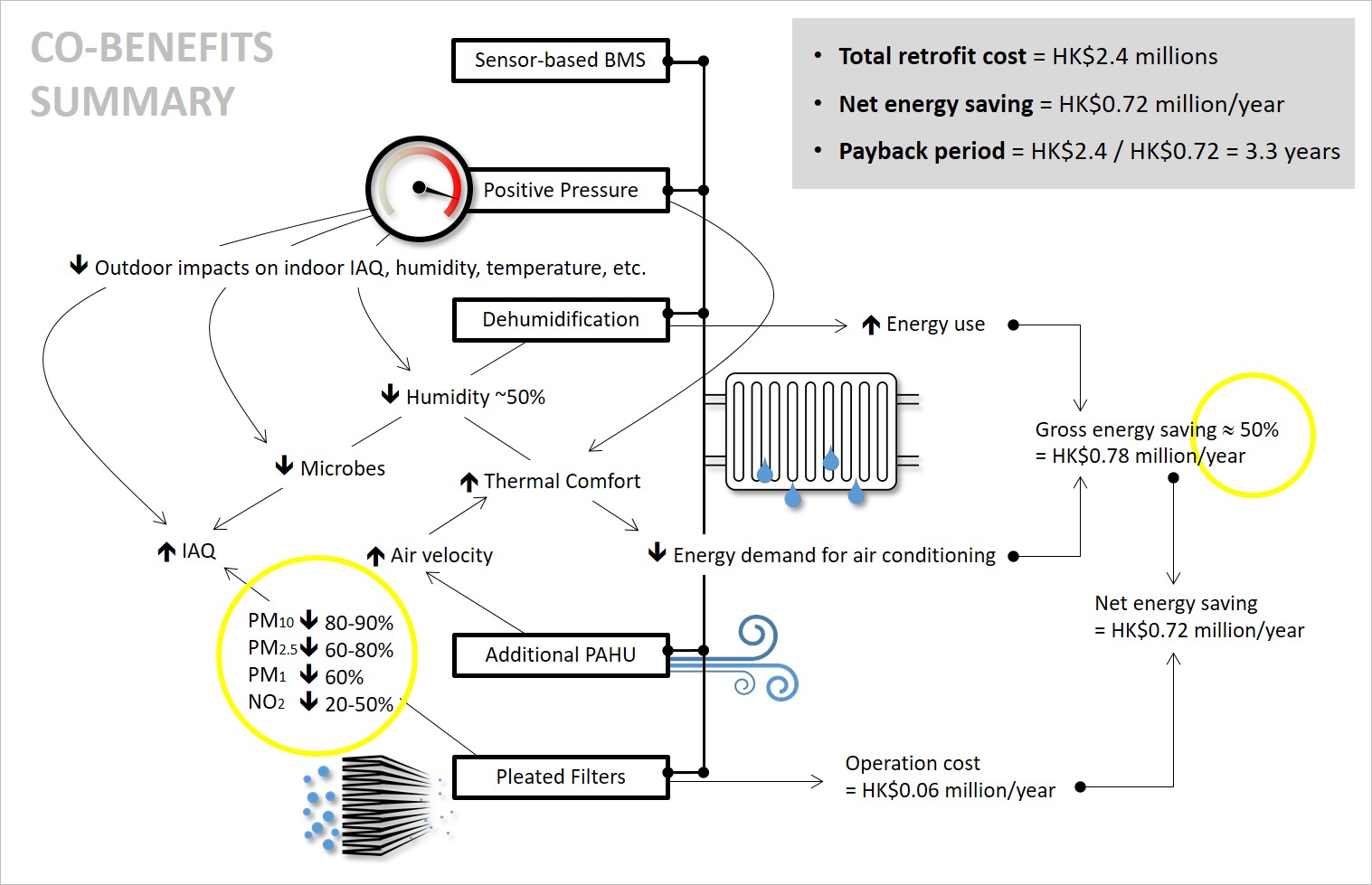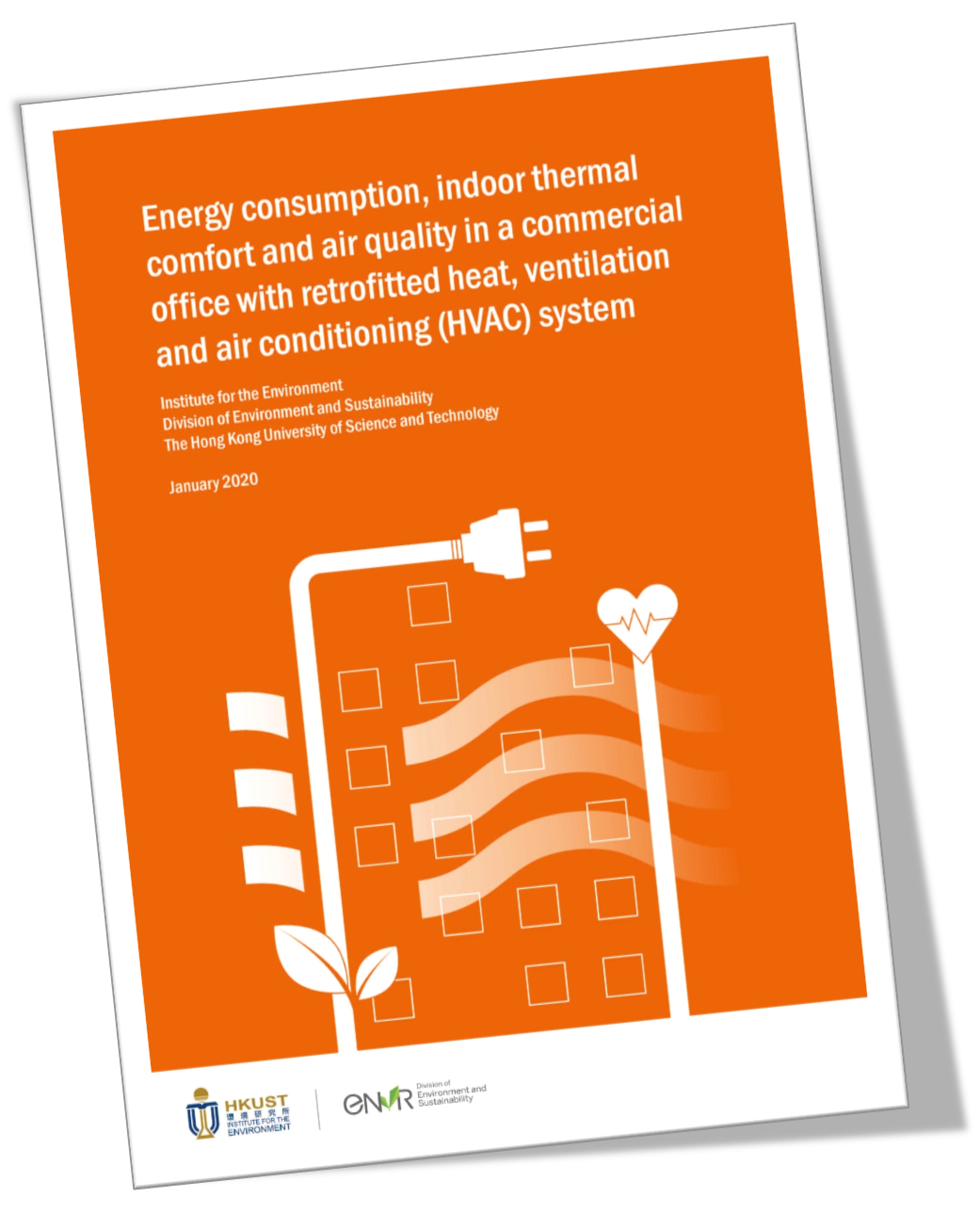Co-benefits of a Smart Building Retrofit Project
Existing commercial buildings, particularly aged buildings, have great potentials to improve energy efficiency through enhancing their Heating, Ventilation, and Air Conditioning (HVAC) system.
IENV showcased how a retrofitted commercial building achieved remarkable benefits from improved energy saving and indoor air quality with desirable thermal comfort levels.
The key retrofitting measures included:
- A sensor-based building management system (BMS)
- Dehumidification of ingress air
- Two-stage particle filtration system
- Positive indoor air pressure
By combining all of these measures, improvements have been noted in the following areas:
- The retrofitted HVAC system is able to reduce energy use by 50% while maintaining generally acceptable indoor thermal comfort.
- For most of the time, indoor PM levels comply with the World Health Organization’s guidelines.
- The upgraded filtration system with a pleated filter is able to reduce outdoor PM ingress by 30% to 60% more than the aluminum filter used before the retrofit.
- Fine PM level at the exhaust location was reduced by 70%, contributing to improving the outdoor air quality.

References:
- Wen Wei Che, Chi Yan Tso, Li Sun, Danny Y.K. Ip, Harry Lee, Christopher Y.H. Chao, Alexis K.H. Lau, Energy consumption, indoor thermal comfort and air quality in a commercial office with retrofitted heat, ventilation and air conditioning (HVAC) system, Energy Build. 201 (2019) 202-215. (Download)
- Summary Report & Policy Recommendations (Download)
Impacts
Retrofitting old buildings plays an important role in an aging urban environment particularly in terms of the magnitude of energy saving. The recent case study we conducted has also demonstrated the possibility to generate co-benefits in improving energy efficiency and indoor air quality without sacrificing occupants' thermal comfort. If the described retrofit design could be adopted by most of the buildings in Hong Kong, we envisage enormous impacts could be generated, which included:
-
reducing energy consumption
-
reducing electricity cost
-
reducing greenhouse gas emissions
-
improving indoor air quality
-
improving thermal comfort
-
improving occupants' health and wellness
-
improving outdoor air quality when filtered indoor air released back to outdoor environment
![]()








